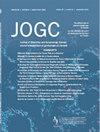第一和第二孕期非整倍体筛查生物标志物与前置胎盘和无胎盘的风险评估:系统回顾与元分析》。
IF 2
Q2 OBSTETRICS & GYNECOLOGY
引用次数: 0
摘要
研究目的本研究评估了患有胎盘早剥谱系障碍(PAS)、前置胎盘和正常胎盘的妇女在第一和第二孕期用于非整倍体筛查的母体血清生物标志物的差异:方法:对截至 2023 年 4 月的五个主要数据库进行了系统回顾。方法:对截至 2023 年 4 月的 5 个主要数据库进行了系统性回顾,其中包括分析 PAS、前置胎盘和无并发症妊娠孕妇的平均生物标志物水平中位数倍数(MoM)的比较研究:结果:对涉及 1886 名参与者的 8 项回顾性研究进行的分析表明,生物标志物水平存在显著差异。在妊娠头三个月,与前置胎盘组相比,PAS 组的妊娠相关血浆蛋白-A 水平明显更高(731 名患者,平均差(MD)0.48 MoM,95% CI 0.23 至 0.73,P = .0001)。此外,前置胎盘组与附着正常组相比,β-人绒毛膜促性腺激素水平升高(362 例患者,MD 0.27 MoM,95% CI 0.17 至 0.38,P < .00001)。在妊娠后三个月,与前置胎盘组和正常胎盘组相比,PAS 患者的甲胎蛋白和人绒毛膜促性腺激素水平明显升高,这表明 PAS 是潜在的标志物:结论:PAS、前置胎盘和正常胎盘妇女的孕早期生物标志物水平存在明显差异。这些研究结果表明了早期筛查的潜力,但进一步的大规模研究对其验证至关重要。这项研究强调了改进胎盘疾病筛查方法的必要性,这可能有助于早期诊断和管理策略。本文章由计算机程序翻译,如有差异,请以英文原文为准。
First- and Second-Trimester Aneuploidy Screening Biomarkers and Risk Assessment of Placenta Previa and Accreta: A Systematic Review and Meta-Analysis
Objective
This study evaluates differences in first and second-trimester maternal serum biomarkers for aneuploidy screening among women with placenta accreta spectrum (PAS) disorders, placenta previa, and those with normal placentation.
Data Sources
A systematic review of 5 major databases up to April 2023 was conducted. Included were comparative studies analyzing mean biomarker levels in multiples of the median (MoM) among pregnant women with PAS, placenta previa, and uncomplicated pregnancies.
Study Selection
Both observational studies and randomized controlled trials were included in this meta-analysis.
Data Extraction and Data Synthesis
Analysis of 8 retrospective studies involving 1886 participants showed significant variances in biomarker levels. In the first trimester, pregnancy-associated plasma protein-A levels were notably higher in the PAS group compared to the placenta previa group (731 patients, mean difference (MD) 0.48 MoM; 95% CI 0.23 to 0.73, P = 0.0001). Also, β-human chorionic gonadotropin levels were elevated in the placenta previa group compared to those with normal attachment (362 patients, MD 0.27 MoM; 95% CI 0.17 to 0.38, P < 0.00001). In the second trimester, alpha fetoprotein and human chorionic gonadotropin levels were significantly increased in PAS patients compared to the placenta previa and normal groups, indicating potential markers for PAS.
Conclusions
Significant differences in early pregnancy biomarker levels among women with PAS, placenta previa, and normal placentation were identified. These findings suggest potential for early screening, but further large-scale studies are essential for validation. This study underscores the need for improved screening methods for placental disorders, potentially aiding in early diagnosis and management strategies.
求助全文
通过发布文献求助,成功后即可免费获取论文全文。
去求助
来源期刊

Journal of obstetrics and gynaecology Canada
OBSTETRICS & GYNECOLOGY-
CiteScore
3.30
自引率
5.60%
发文量
302
审稿时长
32 days
期刊介绍:
Journal of Obstetrics and Gynaecology Canada (JOGC) is Canada"s peer-reviewed journal of obstetrics, gynaecology, and women"s health. Each monthly issue contains original research articles, reviews, case reports, commentaries, and editorials on all aspects of reproductive health. JOGC is the original publication source of evidence-based clinical guidelines, committee opinions, and policy statements that derive from standing or ad hoc committees of the Society of Obstetricians and Gynaecologists of Canada. JOGC is included in the National Library of Medicine"s MEDLINE database, and abstracts from JOGC are accessible on PubMed.
 求助内容:
求助内容: 应助结果提醒方式:
应助结果提醒方式:


